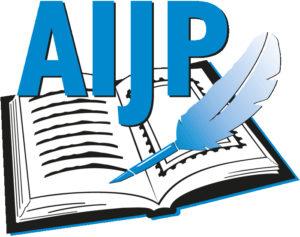The three-part first volume of the 5th edition of the Frech catalogue of private postcards for the area of the German Reichpost 1873-1945 was published in May 2022. Only a few months later, the two-part second volume for the other German postal areas before 1945 is now available as well.
This second volume is in no way inferior to the first in terms of the thoroughness of the editing, and again we are dealing with far more than a mere new edition. Numerous cards have been newly included and integrated into the previous main numbering system with the use of Roman numerals and minuscule letters. As the author assures us in the foreword, no “fanciful private postcards have been deliberately invented”, but rather “all of the listed items actually existed in the original – even if in individual cases this may have been a long time ago”. – Recorded official postal stationery postcards with additional private imprints – these are not considered private postcards according to the generally valid definition – are marked with the suffix (Z = Zudruck).
The liquidation of the extensive collection of the Munich government architect Karl Rieger at an auction in Freiburg in June 2020 allows Frech and his two companions to now present countless Bavarian private postcards in images that previously had to be described in words. This concerns, among others, the artist’s kitsch cards PP 38 E 8-10, which in his day Konrad Unglaub, head of the Munich office of the later Reichsverband für Waisenfürsorge der Volkswohlfahrt (Reich Association for the Welfare of Orphans), commissioned as an enthusiastic collector of postal stationery in an edition of 5-10 pieces. Numerous winter festival cards of the Alpine Club Nuremberg Section can also be presented by picture.
The Württemberg section includes an incredible 814 private postcards – almost all in illustration. This is remarkable for the high number alone. In addition, “this narrowly defined field of collecting … [is] hidden under a web of assumptions and probabilities”. The illustration shows, among others, the rare so-called Dehne cards. Between Nov. 1901 and March 1902, Paul Dehne had one or two copies of local views produced as 2-Pfennig local postcards, which he sent in an envelope to the respective post office for cancellation. The prices between € 300 and € 450 printed in italics in in the catalogue indicate an average value of the auction results achieved and are indicative of the “temporary, i.e. changeable, state of affairs.”
Speaking of prices: here the author is very circumspect in his approaches. The indications all apply to pieces that are “free of defects in every respect, i.e. in the second best state of preservation ‘cabinet'”. He counters the well-meaning suggestion that really rare cards should be marked with an LP [Liebhaber-Preis = collector’s price] by saying that such indications are of no real help, but that comparing auction results provides a far surer and better basis. The fixed valuations result from decades of market observation and are “about 10 % above the average of what buyers at auctions are currently willing to pay voluntarily, including all supplementary costs”. This also explains why many an abundantly offered and often unsold Bavarian private postcard in the lower and middle price categories has undergone a downward price correction.
Because of their picture postcard character, private postcards form an “ideal bridge between deltiology and philately” and should therefore not be missing from any regional or postal history exhibit. The now complete five-volume catalogue in the present, completely revised, supplemented and updated 5th edition – and, according to the authors, presumably the final version – provides exhibitors and jurors with comprehensive information on what is available and how common or rare certain items are. It is an almost inexhaustible source of material for thematic and local collectors, occasionally supplemented by pertinent background information.
The high-quality workmanship with a hard cover and sturdy thread binding will not suffer even with frequent use, and the high-resolution illustrations are sharp and clear even in a small format. The FRECH – the definitive standard work for private postcards for years to come!
Rainer von Scharpen, AEP
FRECH, Hanspeter, METTE, Peter, WERNER, Thomas, Privatpostkarten-Katalog, Volume II. Part One: Bayern vor Luitpold-Wertzeichen. Part Two: Bayern ab Luitpold-Wertzeichen, Württemberg, Kolonien, Besetzte Gebiete. All in all 644 paginated throughout. A-5, coloured illustrations, hardcover with thread stitching. Hausach: self-published: 2022. Price: 47 € + 49 €, bundle price 88 €, + s/h. Available from the author: Hanspeter Frech, Am Hinterhof 30, 77756 Hausach. – HPFrech@web.de

